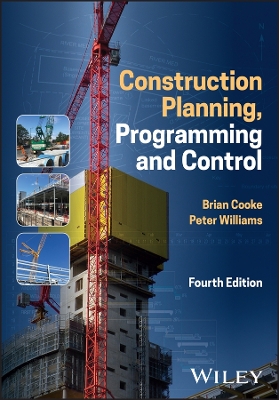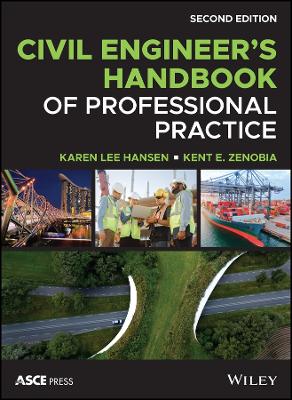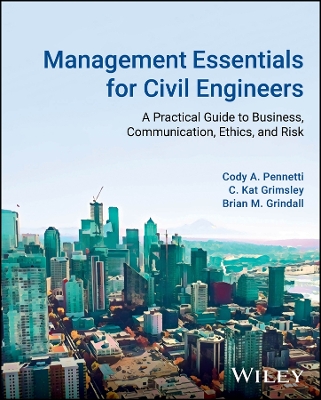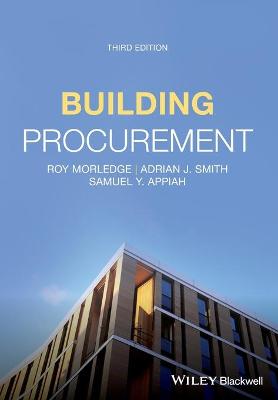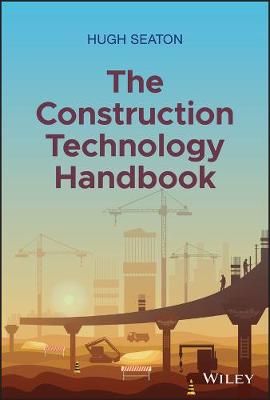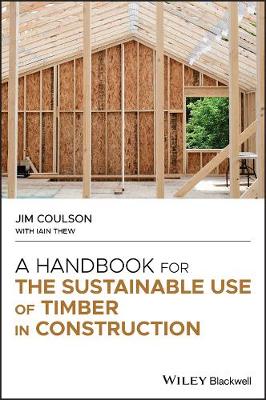Why Do Buildings Collapse in Earthquakes? Building for Safety in Seismic Areas
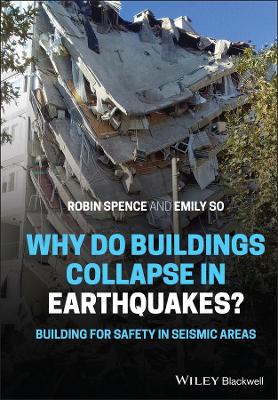 -15%
portes grátis
-15%
portes grátis
Why Do Buildings Collapse in Earthquakes? Building for Safety in Seismic Areas
So, Emily; Spence, Robin
John Wiley and Sons Ltd
08/2021
304
Dura
Inglês
9781119619420
15 a 20 dias
718
Descrição não disponível.
Acknowledgments
Chapter 1. Introduction: why this book?
1.1 Earthquakes - an underrated hazard
1.2 Earthquakes, buildings, people
1.3 The authors' experience of earthquake risk assessment
1.4 Aims of this book
1.5 Outline of the book
References
Chapter 2. How do buildings behave in earthquakes?
2.1 Learning from earthquakes
2.2 Significant earthquakes since 2000
2.3 What can we learn from these significant earthquakes?
2.4 Earthquake losses in rich and poor countries
2.5 Are earthquake losses decreasing over time?
References
Chapter 3. How are buildings constructed in earthquake zones?
3.1 Introduction
3.2 Built form, climate and earthquake resistance
3.3 Building construction types by earthquake zone
Box 3.1 Profile: Randolph Langenbach
3.4 Summary
References
Chapter 4. What happens in an earthquake?
4.1 What is an earthquake?
4.2 Volcanic earthquakes and Induced seismicity
4.3 How earthquakes travel through different media
4.4 Secondary Hazards
Box 4.1 Profile: Toshitaka Katada
4.5 Compound threats
References
Chapter 5. How do different forms of construction behave in earthquakes?
5.1 Introduction: range and classification of building construction types
5.2 Masonry construction
Box 5.1 Profile: Laurie Baker
5.3 Reinforced concrete construction
5.4 Timber frame construction
5.5 Steel frame construction
5.6 Comparing the vulnerability of different construction types
References
Chapter 6 How is the population affected?
6.1 Causes of earthquake casualties
6.2 Casualties due to building collapses
6.3 Survivability of an occupant in a building
6.4 Other causes of casualties
6.5 How can we estimate the number of injured and killed in an earthquake?
6.6 Estimating fatalities due to building collapses
6.7 Estimating casualties from secondary hazards and cascading effects
6.8 The way forward
References
Chapter 7. How can buildings be improved?
7.1 Introduction
7.2 Design of engineered buildings
7.3 Strengthening existing buildings
7.4 Building for safety programmes
Box 7.1 Profile: Amod Dixit
Box 7.2 Profile: Rajendra and Rupal Desai
7.5 Public awareness of earthquake risk: creating a safety culture
References
Chapter 8. Successes and failures in earthquake protection: a country comparison
8.1 Introduction: the survey
8.2 High achievers
8.3 Limited achievers
8.4 Continuing and growing risks
8.5 Country comparison of unsafe structures
8.6 Comparison of the country groups
Acknowledgements
References
Chapter 9. The way forward: what part can different actors play?
9.1 International agencies and global initiatives
9.2 Governments
9.3 Businesses and organisations
9.4 Homeowners and individual citizens
Box 9.1. Profile: Tracy Monk
9.5 Scientists and Engineers
Box 9.2 Profile: Edward Ng
Box 9.3 Profile: Lucy Jones
9.6 Non-government organisations
9.7 Insurers
9.8 The way forward
References
Chapter 1. Introduction: why this book?
1.1 Earthquakes - an underrated hazard
1.2 Earthquakes, buildings, people
1.3 The authors' experience of earthquake risk assessment
1.4 Aims of this book
1.5 Outline of the book
References
Chapter 2. How do buildings behave in earthquakes?
2.1 Learning from earthquakes
2.2 Significant earthquakes since 2000
2.3 What can we learn from these significant earthquakes?
2.4 Earthquake losses in rich and poor countries
2.5 Are earthquake losses decreasing over time?
References
Chapter 3. How are buildings constructed in earthquake zones?
3.1 Introduction
3.2 Built form, climate and earthquake resistance
3.3 Building construction types by earthquake zone
Box 3.1 Profile: Randolph Langenbach
3.4 Summary
References
Chapter 4. What happens in an earthquake?
4.1 What is an earthquake?
4.2 Volcanic earthquakes and Induced seismicity
4.3 How earthquakes travel through different media
4.4 Secondary Hazards
Box 4.1 Profile: Toshitaka Katada
4.5 Compound threats
References
Chapter 5. How do different forms of construction behave in earthquakes?
5.1 Introduction: range and classification of building construction types
5.2 Masonry construction
Box 5.1 Profile: Laurie Baker
5.3 Reinforced concrete construction
5.4 Timber frame construction
5.5 Steel frame construction
5.6 Comparing the vulnerability of different construction types
References
Chapter 6 How is the population affected?
6.1 Causes of earthquake casualties
6.2 Casualties due to building collapses
6.3 Survivability of an occupant in a building
6.4 Other causes of casualties
6.5 How can we estimate the number of injured and killed in an earthquake?
6.6 Estimating fatalities due to building collapses
6.7 Estimating casualties from secondary hazards and cascading effects
6.8 The way forward
References
Chapter 7. How can buildings be improved?
7.1 Introduction
7.2 Design of engineered buildings
7.3 Strengthening existing buildings
7.4 Building for safety programmes
Box 7.1 Profile: Amod Dixit
Box 7.2 Profile: Rajendra and Rupal Desai
7.5 Public awareness of earthquake risk: creating a safety culture
References
Chapter 8. Successes and failures in earthquake protection: a country comparison
8.1 Introduction: the survey
8.2 High achievers
8.3 Limited achievers
8.4 Continuing and growing risks
8.5 Country comparison of unsafe structures
8.6 Comparison of the country groups
Acknowledgements
References
Chapter 9. The way forward: what part can different actors play?
9.1 International agencies and global initiatives
9.2 Governments
9.3 Businesses and organisations
9.4 Homeowners and individual citizens
Box 9.1. Profile: Tracy Monk
9.5 Scientists and Engineers
Box 9.2 Profile: Edward Ng
Box 9.3 Profile: Lucy Jones
9.6 Non-government organisations
9.7 Insurers
9.8 The way forward
References
Este título pertence ao(s) assunto(s) indicados(s). Para ver outros títulos clique no assunto desejado.
Earthquake protection; building collapse; building construction types; building improvement; earthquake engineering; earthquake casualties; earthquake ground motion; disaster risk reduction; sustainable developmernt.
Acknowledgments
Chapter 1. Introduction: why this book?
1.1 Earthquakes - an underrated hazard
1.2 Earthquakes, buildings, people
1.3 The authors' experience of earthquake risk assessment
1.4 Aims of this book
1.5 Outline of the book
References
Chapter 2. How do buildings behave in earthquakes?
2.1 Learning from earthquakes
2.2 Significant earthquakes since 2000
2.3 What can we learn from these significant earthquakes?
2.4 Earthquake losses in rich and poor countries
2.5 Are earthquake losses decreasing over time?
References
Chapter 3. How are buildings constructed in earthquake zones?
3.1 Introduction
3.2 Built form, climate and earthquake resistance
3.3 Building construction types by earthquake zone
Box 3.1 Profile: Randolph Langenbach
3.4 Summary
References
Chapter 4. What happens in an earthquake?
4.1 What is an earthquake?
4.2 Volcanic earthquakes and Induced seismicity
4.3 How earthquakes travel through different media
4.4 Secondary Hazards
Box 4.1 Profile: Toshitaka Katada
4.5 Compound threats
References
Chapter 5. How do different forms of construction behave in earthquakes?
5.1 Introduction: range and classification of building construction types
5.2 Masonry construction
Box 5.1 Profile: Laurie Baker
5.3 Reinforced concrete construction
5.4 Timber frame construction
5.5 Steel frame construction
5.6 Comparing the vulnerability of different construction types
References
Chapter 6 How is the population affected?
6.1 Causes of earthquake casualties
6.2 Casualties due to building collapses
6.3 Survivability of an occupant in a building
6.4 Other causes of casualties
6.5 How can we estimate the number of injured and killed in an earthquake?
6.6 Estimating fatalities due to building collapses
6.7 Estimating casualties from secondary hazards and cascading effects
6.8 The way forward
References
Chapter 7. How can buildings be improved?
7.1 Introduction
7.2 Design of engineered buildings
7.3 Strengthening existing buildings
7.4 Building for safety programmes
Box 7.1 Profile: Amod Dixit
Box 7.2 Profile: Rajendra and Rupal Desai
7.5 Public awareness of earthquake risk: creating a safety culture
References
Chapter 8. Successes and failures in earthquake protection: a country comparison
8.1 Introduction: the survey
8.2 High achievers
8.3 Limited achievers
8.4 Continuing and growing risks
8.5 Country comparison of unsafe structures
8.6 Comparison of the country groups
Acknowledgements
References
Chapter 9. The way forward: what part can different actors play?
9.1 International agencies and global initiatives
9.2 Governments
9.3 Businesses and organisations
9.4 Homeowners and individual citizens
Box 9.1. Profile: Tracy Monk
9.5 Scientists and Engineers
Box 9.2 Profile: Edward Ng
Box 9.3 Profile: Lucy Jones
9.6 Non-government organisations
9.7 Insurers
9.8 The way forward
References
Chapter 1. Introduction: why this book?
1.1 Earthquakes - an underrated hazard
1.2 Earthquakes, buildings, people
1.3 The authors' experience of earthquake risk assessment
1.4 Aims of this book
1.5 Outline of the book
References
Chapter 2. How do buildings behave in earthquakes?
2.1 Learning from earthquakes
2.2 Significant earthquakes since 2000
2.3 What can we learn from these significant earthquakes?
2.4 Earthquake losses in rich and poor countries
2.5 Are earthquake losses decreasing over time?
References
Chapter 3. How are buildings constructed in earthquake zones?
3.1 Introduction
3.2 Built form, climate and earthquake resistance
3.3 Building construction types by earthquake zone
Box 3.1 Profile: Randolph Langenbach
3.4 Summary
References
Chapter 4. What happens in an earthquake?
4.1 What is an earthquake?
4.2 Volcanic earthquakes and Induced seismicity
4.3 How earthquakes travel through different media
4.4 Secondary Hazards
Box 4.1 Profile: Toshitaka Katada
4.5 Compound threats
References
Chapter 5. How do different forms of construction behave in earthquakes?
5.1 Introduction: range and classification of building construction types
5.2 Masonry construction
Box 5.1 Profile: Laurie Baker
5.3 Reinforced concrete construction
5.4 Timber frame construction
5.5 Steel frame construction
5.6 Comparing the vulnerability of different construction types
References
Chapter 6 How is the population affected?
6.1 Causes of earthquake casualties
6.2 Casualties due to building collapses
6.3 Survivability of an occupant in a building
6.4 Other causes of casualties
6.5 How can we estimate the number of injured and killed in an earthquake?
6.6 Estimating fatalities due to building collapses
6.7 Estimating casualties from secondary hazards and cascading effects
6.8 The way forward
References
Chapter 7. How can buildings be improved?
7.1 Introduction
7.2 Design of engineered buildings
7.3 Strengthening existing buildings
7.4 Building for safety programmes
Box 7.1 Profile: Amod Dixit
Box 7.2 Profile: Rajendra and Rupal Desai
7.5 Public awareness of earthquake risk: creating a safety culture
References
Chapter 8. Successes and failures in earthquake protection: a country comparison
8.1 Introduction: the survey
8.2 High achievers
8.3 Limited achievers
8.4 Continuing and growing risks
8.5 Country comparison of unsafe structures
8.6 Comparison of the country groups
Acknowledgements
References
Chapter 9. The way forward: what part can different actors play?
9.1 International agencies and global initiatives
9.2 Governments
9.3 Businesses and organisations
9.4 Homeowners and individual citizens
Box 9.1. Profile: Tracy Monk
9.5 Scientists and Engineers
Box 9.2 Profile: Edward Ng
Box 9.3 Profile: Lucy Jones
9.6 Non-government organisations
9.7 Insurers
9.8 The way forward
References
Este título pertence ao(s) assunto(s) indicados(s). Para ver outros títulos clique no assunto desejado.

